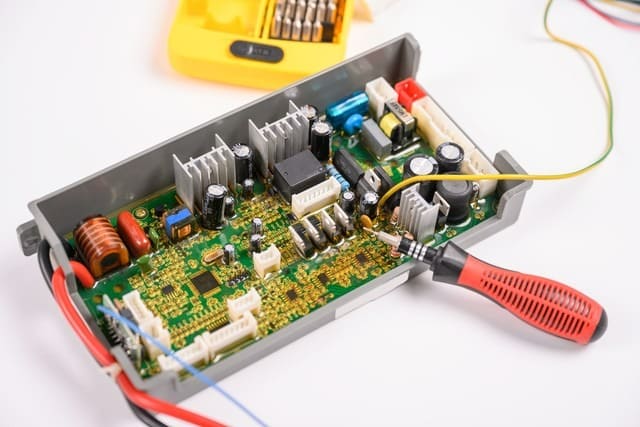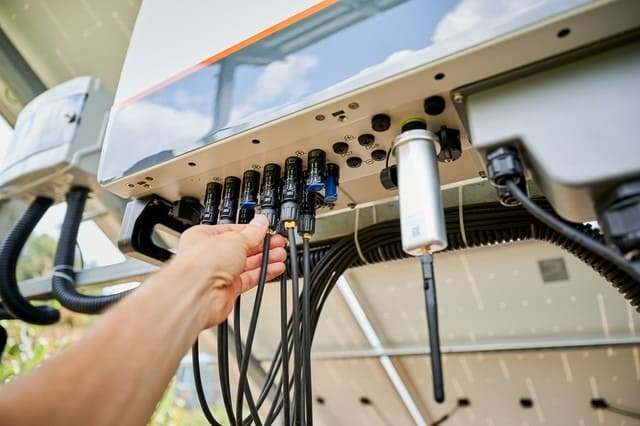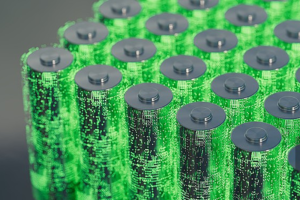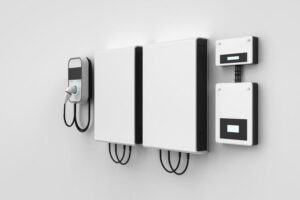With the advancement of solar PV technology, PV and energy storage inverters have become essential for solar power stations. Despite being inverters, they differ significantly in design, application, and performance. This article explores the disparities between PV inverters and energy storage inverters.
1. Definition and Principle
A PV inverter converts DC power from solar panels into AC power for residential and industrial electricity needs.
It usually includes a transformer, a set of electronic components and integrated circuits, which can convert the direct current (DC) emitted by photovoltaic panels into the alternating current (AC) commonly used in our daily lives.
An energy storage inverter converts DC power to AC power and incorporates energy storage devices like batteries to store and release electrical energy as required. These inverters enable bidirectional power conversion, efficient charging and discharging, and facilitate the utilization of various energy sources.

2. Application scenarios
Photovoltaic inverters are mostly used in solar photovoltaic systems in industrial areas and residential areas. They are mainly used to transport photovoltaic panels to power-consuming areas through alternating current. In addition, large photovoltaic power stations also need to use photovoltaic inverters to convert the generated DC power into AC power.
Energy storage inverters are primarily utilized in energy storage systems and power grids, particularly in renewable energy-intensive industries like solar and wind power. Their role is to efficiently manage and regulate these alternative energy sources within the power grid. By leveraging devices like batteries, energy storage inverters store excess energy and supply it to the grid during periods of low generation, such as at night or during cloudy days.
3.Working method
The working principle of a photovoltaic inverter is similar to that of an ordinary inverter, converting direct current into alternating current. However, the photovoltaic inverter needs to adjust both the magnitude and frequency of the DC voltage in order to convert the DC power into AC power suitable for the application. In addition, photovoltaic inverters have some other functions, such as smoothing power fluctuations, protection devices, data logging devices, etc.
The working principle of energy storage inverter is different from that of photovoltaic inverter. It has characteristics between conventional inverter and bidirectional DC/AC converter. The energy storage inverter can collect electrical energy from renewable energy systems such as solar energy and wind energy and store it in the battery.
when it is used, this stored electrical energy can be released and converted to the grid or directly into output power. . In addition, the energy storage inverter protects and manages the battery pack by controlling parameters such as current, voltage, power, and temperature during battery charging and discharging.
4.Performance indicators
Photovoltaic inverters and energy storage inverters also differ in performance indicators. Photovoltaic inverters mainly consider the following indicators:
①Efficiency
The efficiency of a photovoltaic inverter refers to the ability to convert direct current into alternating current. Therefore, the higher the efficiency, the smaller the power loss of the conversion. Generally speaking, the efficiency of photovoltaic inverters is required to be above 90%.
②Power density
Photovoltaic inverters need to meet certain power requirements during use. Therefore, its power density has become an important performance indicator, which is generally required to be 1.5~3.0W/cm2.
③Protection level
Photovoltaic inverters should have good environmental adaptability, so their external structures should have corresponding waterproof, dustproof, earthquake resistance, fireproof and other capabilities. At present, domestic and foreign standards require that the protection level of photovoltaic inverters is no less than IP54.

The performance indicators of energy storage inverters have the following indicators:
① Response speed
The energy storage inverter should have fast and stable response characteristics. When the load of the system changes, the energy storage inverter should have the ability to respond quickly.
②Conversion efficiency
The energy conversion efficiency of the energy storage inverter should be relatively high to ensure storage and discharge efficiency.
③Storage energy density
In order to achieve efficient storage function, the storage energy density of the energy storage inverter should be as large as possible.
5. Cost
There is also a big difference in the cost of photovoltaic inverters and energy storage inverters. Generally speaking, the number of photovoltaic inverters is much greater than that of energy storage inverters, and the price of photovoltaic inverters is relatively low.
The energy storage inverter is a relatively high-end product, generally priced at more than hundreds of thousands of yuan. It requires the use of a large number of batteries and complex technical debugging, so the cost of use is also relatively expensive.
In short, although photovoltaic inverters and energy storage inverters are both inverters, there are certain differences in their scope of application, working methods, and performance characteristics. Therefore, in the actual application process, the selection of the two should be comprehensively considered based on actual needs.





